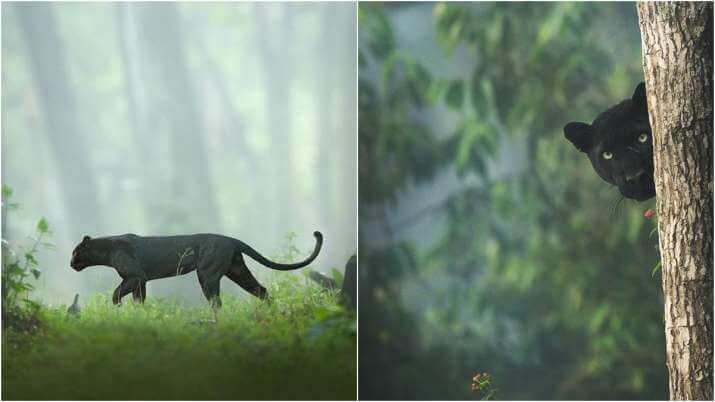BENGALURU: A forest range officer (FRO) in Karnataka’s Nagarhole Tiger Reserve (NTR) on Monday spotted a black panther at a time when two photographs of a similar big cat have gone viral on social media.
“An FRO in NTR has sighted a black panther on Monday,” Deputy Conservator of Forests D. Mahesh Kumar told IANS, sharing two photographs of the big cat. The panther, which seemed to be 4-5 years old but whose sex could not be determined, was spotted on a large moss-laden tree branch in an attentive posture and looking backwards.
In another shot on the same branch, the panther was looking back at the lens of the photographer in a rear focus posture. Sighting the big cat assumes significance because two more photographs of a black panther purported to be from Kabini in Mysuru district have taken the social media by a storm with widespread sharing and retweeting.
However, the forest official said he cannot vouch if the animal in the viral photographs is the same as that of the black panther spotted on Monday by the forest officials. “I am not sure of the photographs of the black panther in the viral social media posts and the one spotted on Monday are one and the same,” he said
Noting that the viral photographs had neither a date stamp nor credits, he said if somebody takes credit with a copyright, they could confirm with the photographer. Though an individual is the claiming the credit for the viral photographs, Mahesh Kumar, who oversees the forest where the panther’s photographs were said to be captured, said he cannot confirm this.
However, he has confirmed that Shaaz Jung who proclaimed to have shot the pictures is a regular visitor to the tiger reserve. Mahesh Kumar also said that photographers are not allowed inside the forest and one can capture photographs only from the confines of a safari vehicle.
“We don’t allow photographers just like that into the park. Any visitor who comes for a safari will be allowed inside the park in the safari route. So it is by chance they sight an animal. Anybody can sight any animal on any given day,” he said. However, no wildlife photography enthusiast or a visitor is allowed to disembark from a safari vehicle, and doing so amounts to an offence.
Meanwhile, the Deputy Conservator of Forests said that a black panther is nothing but a leopard with excessive melanin on its coat and gets all the attention because of the publicity people give it.
“It gets specialty only because of the people who follow it and give publicity to that animal. They have some kind of special value attached to it. Otherwise, it is just like any other animal, only thing is it is melanistic,” he
Melanin is the pigment which gives black colouration to biological tissues such as skin, feathers or hair in animals as well as humans. Mahesh Kumar said the rosette spots can be identified on a black panther’s coat as well on a careful and closer look. “It is nothing but a leopard species, but because of high melanin content in the body it expresses that black colour. It is not a different species. Some people have a doubt that it is a different species altogether,” he said.
Kumar said there are about half a dozen black panthers in Karnataka forests itself and one in Nagarhole, though it is not impossible to spot them but rare.
NGT stretches between Kodagu and Mysuru districts and was a protected reserve from the time of the Wodeyar dynasty, rulers of the erstwhile kingdom of Mysuru. Nagarhole, which served as an exclusive hunting reserve of the Wodeyars, was made a wildlife sanctuary in 1955, covering an area of 284 square km – later stretched up to 643 square km.
It was upgraded to a national park in 1988 and was brought into the fold of Project Tiger after being declared a tiger reserve in 1999. NGT has three sub-divisions, and light ranges. Some of the animals which thrive in the reserve include tigers, panthers, wild dogs, elephants, bisons, sambar, spotted deer, barking deer, sloth bears, wild boars, common langur, bonnet macaque and a variety of reptiles and birds.







